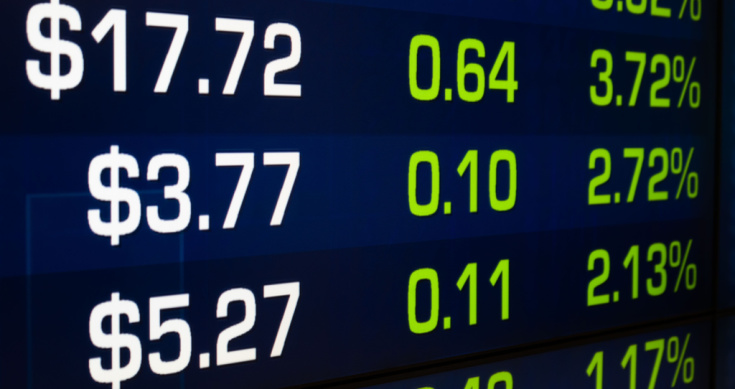Economy and Indices
The Australian market and most developed countries have fallen this week (or look to at the time of writing). Each trading this week has experienced wide trading ranges for each day with Australian Volatility remaining around the highest levels (circa 24) over the last four months.
Oil markets reacted to Iran and world powers signing a nuclear deal that is poised to trigger a sanctions relief to increase oil exports.
Sectors
Sectors on the ASX are a classification which is given to each listed company to describe the industry group they operate within.
The top three sectors this week were:
1. Telecommunications
Telstra (TLS) dominates this sector with a staggering 78% weighting. It is fair to say that where TLS goes, the Telcos go. While this has been the strongest sector on the ASX for the last 5 days, it has also been the second strongest sector over the last 5 years (second to Healthcare).
What is worth noting is that Vocus (VOC) and TPG (TPM) are up 500% and 675%, respectively, over the last 5 years, This compares to TLS up 200% over the same period. Despite the capital growth in both VOC and TPM, both companies still have low weighting to the sector as a whole.
2. Property
Also known as ‘AREITs’ (XPJ) and is fairly well spread across the sector. This sector is rather defensive with consistent yields and rather steady asset/company values.
With the low interest rate environment in AU and the ‘Yield Compression’ of early 2015, this sector has performed reasonably well. However, since the Big 4 Banks dropped out of favor in April 2015 this sector has stopped rising and churned sideways, somewhat better than the overall ASX.
The strongest REITs on the ASX are companies with exposure to one of market-leading themes listed below. These leading REITs are GTY, SRV, RFF and GHC.
3. Utilities
Utilities are 31% AGL Energy (AGL), so a strong performance in utilities means AGL had a good week.
Typically Utilities are also a ‘defensive’ sector. Sometimes this means the Utilities sector goes up as the overall market falls, but more often this just means the rest of the market falls more than Utilities fell in a down week.
AGL had a good week, while the other Utilities followed the overall market down.
The Weakest sectors were:
1. Energy (oil and gas)
Energy is a cyclical sector and its performance is often a function of the world prices for oil and gas commodities. Oil prices performed fell considerably this week, with the falls exacerbated after the signing of a nuclear deal between Iran and world powers which paves the way for a surge in oil exports.
CTX is the only major Energy company that is anywhere near its highs for the last 12 months, the rest are lingering or making new lows.
2. Materials (mining)
Materials are dominated by BHP and RIO, together making up 44% of the Materials index (XMJ).
The strongest contributing factor to Materials being down is BHP returning to prices last seen in 2004. This fall is a combination of both company-specific news and world commodity prices that have not been helpful to this sector this week. BHP has also had its dividend forecasts cut by up to 50% from some brokers.
Segments
Segments are the classifications given to companies of similar sizes for their market capitalisation (total company value by share price).
Within the ASX Top 200, the segments are:
– The 50 largest (‘Fifty Leaders’) and generally called the ‘blue-chip’;
– The next 50 companies (from 51 to 100th largest) are the ‘Mid-cap’ shares; and
– The last 100 of the Top 200 (from 101 to 200th) are the Small-caps’.
The ASX 200 is trawling around the lows for the year which has been driven mostly by the larger capitalised shares (“blue-chips”).
There has been negligible differences between most indices’ performances this week, except for the Small Caps, which have fallen more than the Emerging Companies index (a group of shares that are even smaller than Small Caps).
With the rest of the market sharing a fairly uniform fall this week but the Small Caps falling harder often indicates an external anomaly. The Small Cap index is one of the most evenly spread indices on the ASX, and there were no sinister movements in any of the largest Small Cap shares – which rules out share-specific movements.
This anomaly for Small-Caps appears to be margin-call selling. Industry sources have reported that the last two weeks have seen significant increases in margin-call selling.
Margin call selling is the event where a Margin Lender (mortgage provider for shares) asks the borrower (share investor) to respond to falling share prices and portfolio valuations. The response is either to inject for equity (cash) or sell down some shares to reduce the loan amount.
Margin Call selling favours selling the shares with the least amount of leverage possible (lowest lending ratios) because these investments tie up the most amount of capital. The Small Cap shares are normally the shares with the least amount of leverage (lowest lending ratios) and therefore are the first to be sold. This may be the reason Small Caps are down more than the rest of the ASX this week.
Market Darlings:
These are the shares we all wish our portfolios were filled with – the leading shares of the leading groups on the ASX.
| Security | Economic Sector | Description | Annual Return | Rank |
| APO | Apn Outdoor Grp | Consumer Discretionary | 136% | 19 |
| BAL | Bellamy’s Australia | Consumer Staples | 703% | 2 |
| BKL | Blackmores Limited | Consumer Staples | 481% | 6 |
| CZZ | Capilano Honey Ltd | Consumer Staples | 177% | 14 |
| HUB | HUB24 Ltd | Financials | 360% | 8 |
| OVH | Onevue Holdings Ltd | Financials | 212% | 11 |
| RAP | Resapp Health Ltd | Health Care | 570% | 4 |
| SIQ | Smartgrp Corporation | Industrials | 245% | 9 |
| IPH | IPH Limited | Industrials | 149% | 17 |
| ISX | Isignthis Ltd | Information Technology | 1083% | 1 |
| ADA | Adacel Technologies | Information Technology | 680% | 3 |
| NTC | Netcomm Wireless | Information Technology | 504% | 5 |
| SMA | SmartTrans Holdings | Information Technology | 436% | 7 |
| SMN | Structural Monitor. | Information Technology | 234% | 10 |
| ACX | Aconex Limited | Information Technology | 198% | 12 |
| NOR | Norwood Systems Ltd. | Information Technology | 196% | 13 |
| APX | Appen Limited | Information Technology | 170% | 15 |
| FLN | Freelancer Ltd | Information Technology | 168% | 16 |
| SDA | Speedcast Int Ltd | Telecommunication Services | 147% | 18 |
Leading Market Themes
Consumer Discretionary shares have continued to perform well, notably: professional services, auto companies, food, media and entertainment companies. There are significantly more Consumer Discretionary shares in the Mid-Cap index (XMD) than the Top 50 (XFL) which has helped the Mid-Caps to continue to provide strong returns over the last six months. Given the small weighting the Mid-caps have on the XJO, the positive movements over the last few months have been negated by the largest companies in the XJO.
Technology companies, mostly software/‘cloud’ related and non-physical solutions, are providing the strongest returns on the ASX. A lot of these companies are small and mirco-caps and some are not even in the All Ords index (XAO).
Retirement related services also continue on a steady rise. These shares range from retirement homes, healthcare facilities and ageing services and technologies.
Wealth Managers are another strong, but less prominent theme, while Food related producers/distributors are also performing well although are only represented by small market capitalised companies.









